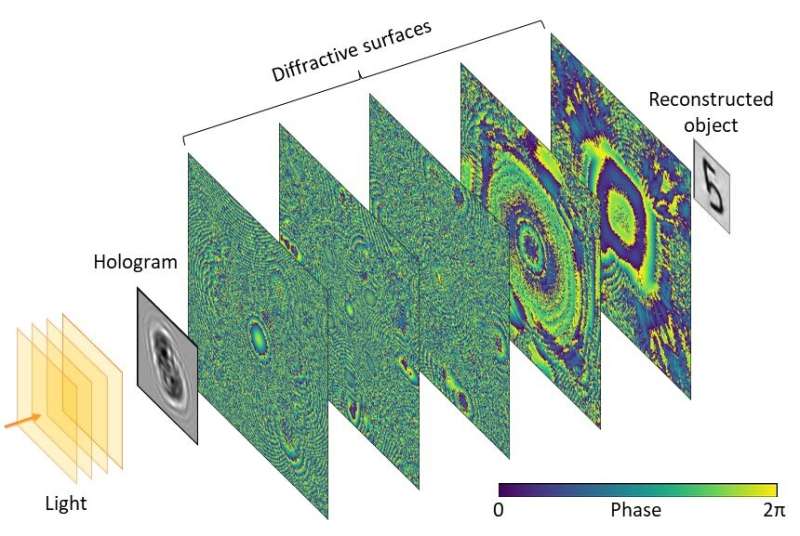
Since its invention by Nobel
Laureate Dennis Gabor in the late 1940s, holography has found widespread use in
science and engineering applications such as computational imaging, microscopy,
sensors, displays and interferometry. In many applications of holography, the
reconstruction of holograms to retrieve the object information is generally
performed using digital computers and iterative algorithms, which can be time-consuming
depending on the size of the holograms.
In a recently published article in ACS Photonics, Professor Aydogan Ozcan and graduate student Sadman Sakib Rahman from the California NanoSystems Institute (CNSI) and the Electrical and Computer Engineering Department at the University of California, Los Angeles (UCLA) presented a novel approach for computer-free, all-optical reconstruction of holograms using diffractive networks. A diffractive network is an all-optical processor composed of a set of spatially engineered diffractive surfaces that collectively compute a desired transformation of an input light field through light-matter-interaction and diffraction. The spatial features of a diffractive network are trained and optimized for a given task using deep learning in a computer. After the training is complete, these diffractive surfaces can be fabricated and assembled to form a physical network that can all-optically reconstruct an input hologram of an unknown object or scene, at the speed of light and without any external power, except for the illumination light.
The entire diffractive network architecture that can reconstruct holograms all-optically is very thin and spans only ~225 times the wavelength of light. For example, using a green laser source for illumination, such a diffractive network would be as thin as a human hair, making it extremely compact and lightweight. This very thin, compact design also makes it possible to instantaneously reconstruct an object from its hologram in less than 1 picosecond, which is more than a trillion times faster compared to state-of-the-art digital hologram reconstruction algorithms that utilize graphics processing units (GPUs).
The numerical analyses performed by UCLA researchers show that the diffractive network exhibits numerous advantages for all-optical hologram reconstruction, achieving superior image reconstruction quality, enhanced depth-of-field, and higher diffraction efficiency at the output of the diffractive processor. UCLA researchers conclude that this all-optical hologram processor can find many applications in different fields such as holographic imaging, microscopy, sensing and display related applications, especially benefiting from its computer-free operation and ultra-fast image reconstruction capability. The authors acknowledge research funding from US AFOSR.

 Previous page
Previous page Back to top
Back to top







